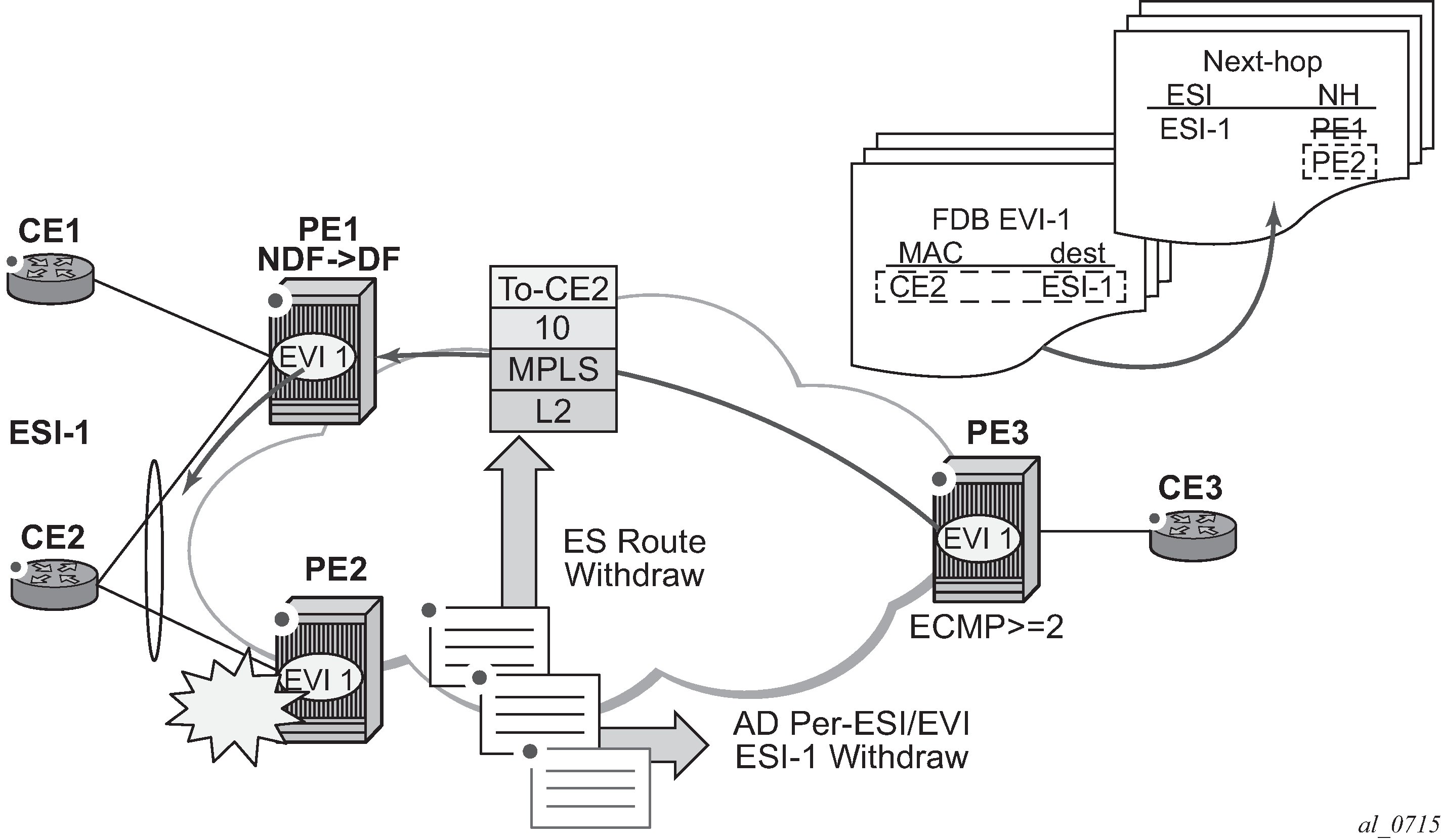Figure: All-active multihoming ES failure shows the behavior on the remote PEs (PE3) when there is an ethernet-segment failure.

The unicast traffic behavior on PE3 is as follows:
-
PE3 forwards MAC DA = CE2 to both PE1 and PE2 when the MAC advertisement route came from PE1 (or PE2) and the set of Ethernet AD per-ES routes and Ethernet AD per-EVI routes from PE1 and PE2 are active at PE3.
If there was a failure between CE2 and PE2, PE2 would withdraw its set of Ethernet AD and ES routes, then PE3 would forward traffic destined for CE2 to PE1 only. PE3 does not need to wait for the withdrawal of the individual MAC.
The same behavior would be followed if the failure had been at PE1.
If after step 2, PE2 withdraws its MAC advertisement route, then PE3 treats traffic to MAC DA = CE2 as unknown unicast, unless the MAC had been previously advertised by PE1.
For BUM traffic, the following events would trigger a DF election on a PE and only the DF would forward BUM traffic after the esi-activation-timer expiration (if there was a transition from non-DF to DF).
-
Reception of ES route update (local ES shutdown/no shutdown or remote route)
-
New AD-ES route update/withdraw
-
New AD-EVI route update/withdraw
-
Local ES port/SAP/service shutdown
-
Service carving range change (effecting the evi)
-
Multihoming mode change (single/all active to all/single-active)